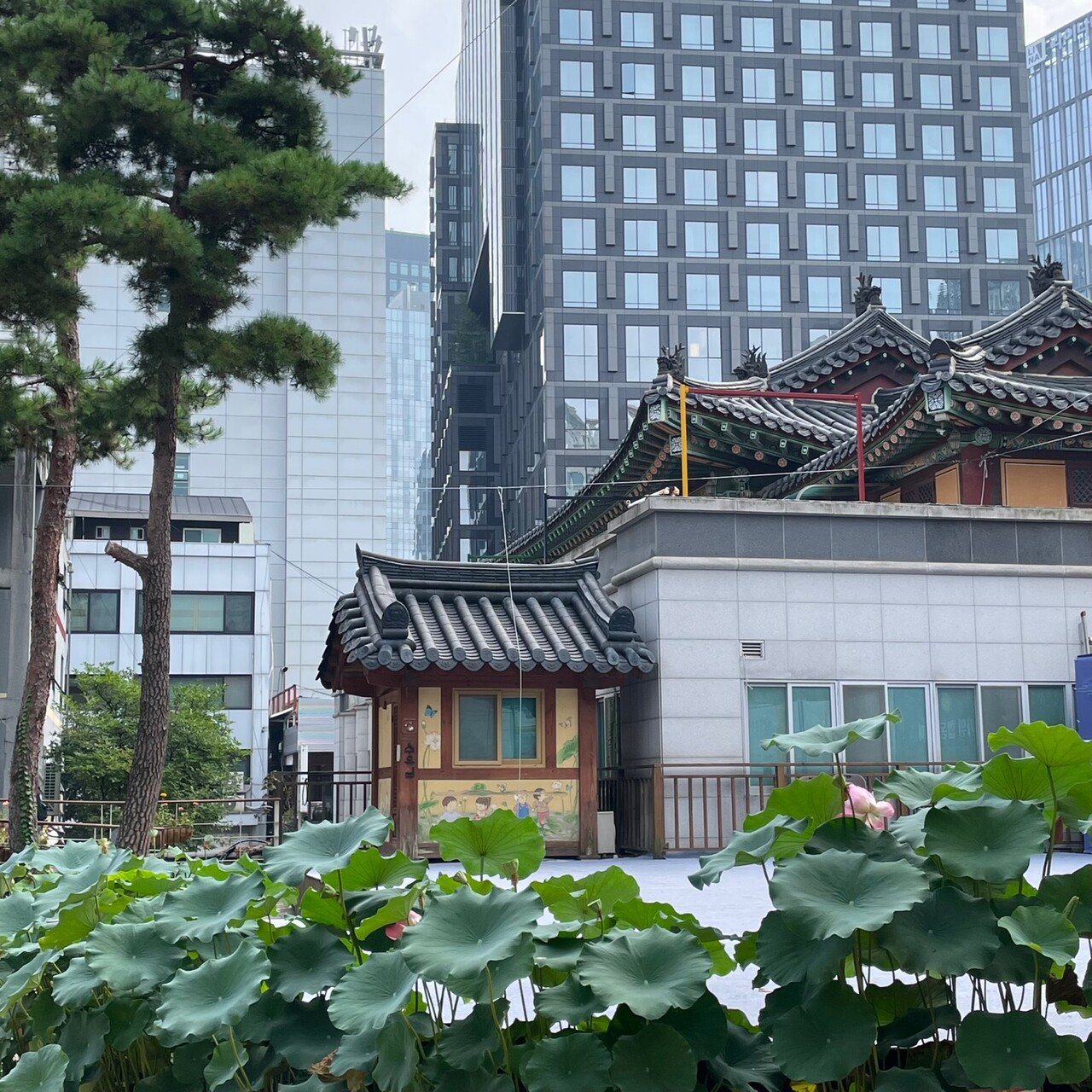
As Buddhism grows in popularity worldwide, many people are turning their attention to the temples around the globe. South Korea is one of those countries where temple tours and Templestay programs are a staple of the tourist itinerary. With more foreigners visiting the country than ever, Korean temples are at the top of their game, promoting Templestays and expanding meditation programs. While historic temples can be found all over the country, many are located in easy-to-reach locations in Seoul. In this article, The Dongguk Post presents a selection of temples in and outside of Seoul, as well as some popular Templestay programs. By doing so, The Dongguk Post hopes to encourage international Donggukians to learn more about Korea’s temples and experience them.
Jogyesa Temple: South Korea’s signature temple
Located in Jung-gu, the center of Seoul, Jogyesa Temple is the headquarters of the Korean Jogye sect and is considered one of the most important temples representing Korean Buddhism. Its convenient location in the heart of Seoul makes it easy to get to, and the temple’s charming blend of traditional architecture and modern buildings makes it a favorite among foreign tourists.
Jogyesa Temple was founded in 1910 during the Japanese colonial period under the name of Gakhwangsa by monks who sought to retore the independence of Korean Buddhism and national pride, and it was the first temple to be located within the four main gates. The four main gates, called Sadeamun in Korea, Heunginjimun in the east, known as Dongdaemun; Donuimun in the west, known as Seodaemun; Sungnyemun in the south, known as Namdaemun; and Sukjeongmun in the north, known as Bukdaemun.
In 1937, construction began to move Gakhwangsa to its current location, and the temple’s name was changed to Taegosa. However, after the Buddhist Purification Movement in 1954, the name was changed to Jogyesa Temple, and it now serves as the main temple of the Jogye sect, a representative sect of Korean Buddhism.
Jogyesa Temple also offers a Templestay experience. The temple provides two programs: a two-hour long day program and an overnight program, priced at \10,000 and \80,000 for adults, respectively. The one-day program includes a tour of the temple and a lotus cup lantern-making experience, while the two-night program offers all that and a more extensive Buddhist tradition experience, including worship, tea ceremonies with monks, 108 bowing, etc.
Bongeunsa Temple: The most famous temple among foreigners
Bongeunsa Temple is located in Gangnam-gu, Seoul, and is well-known as one of the main temples in the city, along with Jogyesa Temple. It was initially a temple in the mountain of Sudosan, but due to the development and urbanization of the Gangnam area, it has become a temple in the middle of the city.
Bonggeunsa Temple’s history stretches back over 1,000 years. In 794, during the Silla Dynasty, a monk named Yeonhoe Guksa built a temple and named it Gyeongsungsa. During the Joseon Dynasty, Gyeongsungsa was renovated and renamed Bongeunsa Temple, and it has been called that ever since. Bongeunsa Temple is as rich in historical treasures as it is in its history, preserving National Treasure No.321, the Goryeo Bronze Ruyun Incense Burner (now housed in Dongguk University Museum), as well as the “Printing Woodblocks of Commentary on the Avatamsaka Sutra” and the “Diamond Sutra.”
Bonggeunsa Temple is also considered one of the most famous temples for foreigners; therefore, it offers a separate Templestay program exclusively for foreigners that is conducted in English. The Templestay program for foreigners is divided into a one-day program that lasts two hours from 2 P.M. to 4 P.M. every Thursday and an overnight program costing \30,000 and \120,000 each. The one-day program includes a temple tour, Da-Seon (tea ceremony), and Sagyeong (copying sutras in golden ink), while the two-day program includes all that and more, including Yebul (Buddhist ceremony), 108 bowing, tea time with a monk, etc.
Jeonggakwon: A temple on campus
Jeonggakwon is a Buddhist temple located in Jung-gu, Seoul, on the campus of Dongguk University. It hosts regular student Dharma sessions on Wednesdays, as well as Practice in Seon courses from Dongguk University. Nearby is the Beomjonggak Bell, where they ring the bell at 8:30 A.M. and 12 P.M. every day to announce the time. although Jeonggakwon is a facility withing the school and a space where courses are taught, it is officially a temple belonging to the Jogye sect of Korean Buddhism and Seoul Tangible Cultural Property No. 20, so it is considered an independent institution.
While no regular Templestay programs are held at Jeonggakwon, several other events are held. There are three main events for students: Wednesday Dharma Talks, “Ready to Meditate,” and Hapjang Day. The Wednesday during the semester from 4 P.M. to 5 P.M. for one hour in the Jeonggakwon and is open to all Dongguk University students. Ready to Meditate is a program held every Tuesday, Wednesday, and Thursday during the semester in the meditation room at Jeonggakwon. It includes programs such as yogatation (yoga + meditation), singing bowl meditation, and tea meditation. Finally, Hapjang Day is an event that aims to actively introduce and expand the use of the Hapjang greeting as the official daily greeting. It is held on the 11th of every month at Jeonggakwon for all Donggukians.
In this article, we learned about some of the most prominent temples in the city center of Seoul, as well as the temple located at Dongguk University, and briefly reviewed their history. With this edition of Trip articles, including the following article that introduces several temples outside of Seoul, The Dongguk Post hopes to increase interest in Korean temples among international Donggukians.

